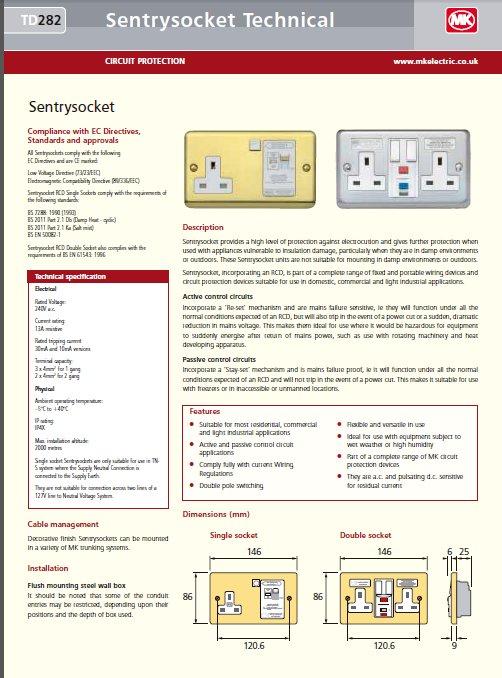My worry is more that when one looks at averts in the likes of screwfix for these products there is nothing warning about TN-S only it's only when one goes to likes of RS that one gets the information as to how they are to be used.
I suppose it's for the buyer to satisfy him/herself that the specification of a product meets their needs, and can't necessarily expect the adverts of a retailer to provide all of the necessary information.
However, in this case there is certainly confusion about what the specification/ instructions for the MK products really are, and the reasons for what they say. The lack of dating of the documentation is a particular problem, but the actual MK statement is fully of confusing uncertainies - reference to TN-S when they probably at least mean TN, talking about supply neutral and supply earth being connected with a TN-S supply, the reference to a 127V L-N supply - and, with one version of the documentation, the apparent difference between single- and double-products. Until someone gets clarification about all that, you'll not even know whether you have ever fitted one of these products 'incorrectly'.
I see point on current but not sure of the let through value of a B32 MCB? It's not just the loop impedance it's also the let through value ...
I don't think 'let through' is relevant to what I was talking about (maximum breaking current) - it's simply a matter of the magnitude of PEFR (dependent only on Zs) and disconnection times - which, in the case of the MCB, is simply a function of the fault current (hence, again, Zs). The RCDs you were talking about will tolerate a 'through fault current' of 1500A - so provided the MCB disconnects the supply
before the RCD attempts to break the current, there's no problem. However, if the MCB does
not disconnect quickly enough, the RCD will attempt to break the current, and if that fault current is >250A (again, dependent only on Zs), the RCD's breaking capacity will have been exceeded. Hence, as I said, if one cannot be certain that an OPD will operate before the RCD contacts attempt to open, then the only safe course would be to avoid using the product if the PEFR is above 250A (hence Zs is below about 0.92Ω

. Is that logic wrong?
Kind Regards, John


